They say that the kitchen is the heart of the house while the living room is its showpiece. The living room usually has several functions – it is a place to rest, meet friends, and sometimes even work. The lighting of the living room should be flexible, catering to our needs, while also giving us the opportunity to create the space we want. After all, it is here that we spend most of our free time, which is why it is important that the lighting in the living room is tailored to our individual expectations and preferences.
1. Go for a variety of layered lighting
The multifunctional role of the living room requires a lot of flexibility. Lighting must be conducive to relaxation, it should create a romantic atmosphere, and when necessary, effectively illuminate the pages of your favourite reading. Such a mix of functions calls for layered lighting that adapts to your needs and mood. That is why it is worth keeping in mind the division of lighting into general, task and accent lighting. This approach allows you to create a space customized to your individual needs.
- General lighting is designed to provide enough light so that you can comfortably use the room after dark, just like during the day.
- Task lighting should be directed to areas of the so-called visual tasks. In the case of a living room, this can be, for example, a coffee table. Thanks to this, it is much easier to distinguish a navy blue pawn from a black one during a fierce evening session of board games.
- Accent lighting ensures that the room looks beautiful and atmospheric. It can be directed, for example, at a decorative wall texture, your favourite plant or a souvenir photo. Accent lighting highlights that which is meant to be noticed.
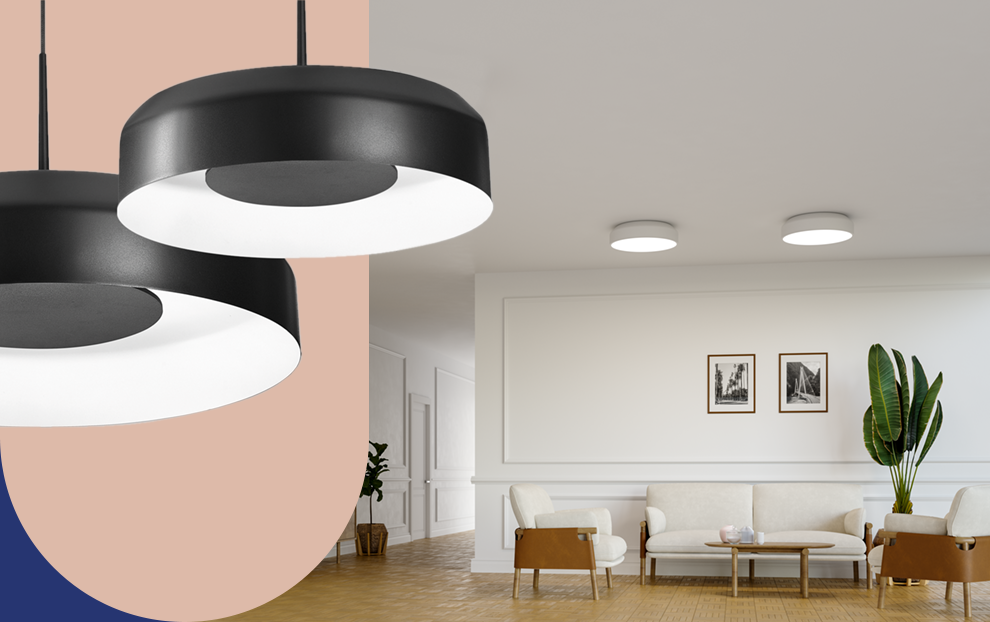
General lighting will be provided by e.g. BIG SIZE, a plafond which, thanks to its microprismatic diaphragm, emits soft, diffused light, while not putting a strain on our eyesight or visual comfort. Living rooms coupled with a kitchenette require task lighting that will focus bright light above the table in the dining room or the worktop in the kitchen area, making your daily chores much easier. MODERN BALL will be perfect for this type of tasks. Thanks to its milky shade, this modern sphere-shaped luminaire will gently but effectively illuminate areas requiring greater light intensity.
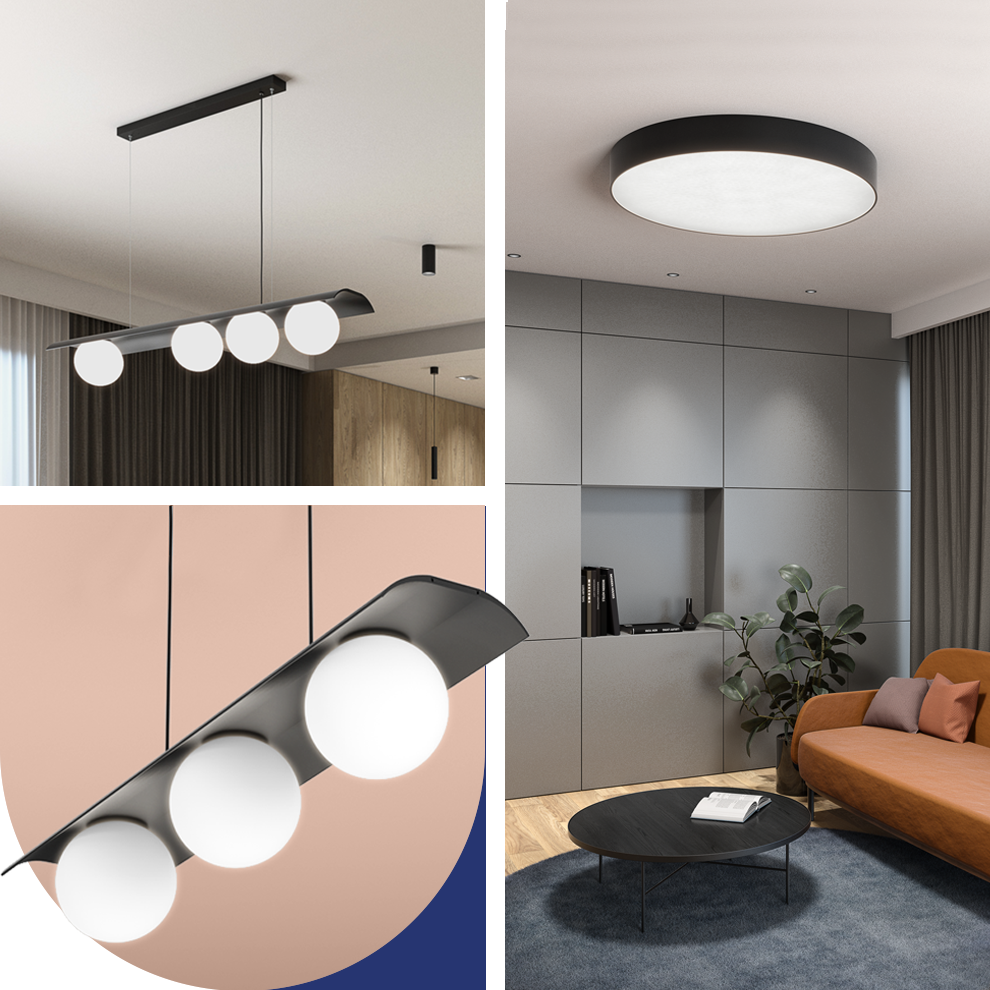
The living room is also a place of rest. After an exhausting day at work, it is worth soothing your senses by immersing yourself in the sounds of music or setting off on a film journey in the company of your favourite actors. The atmospheric GOLO or MORE wall lamps will provide the right atmosphere for such situations, additionally adorning the wall with original, geometric light forms.
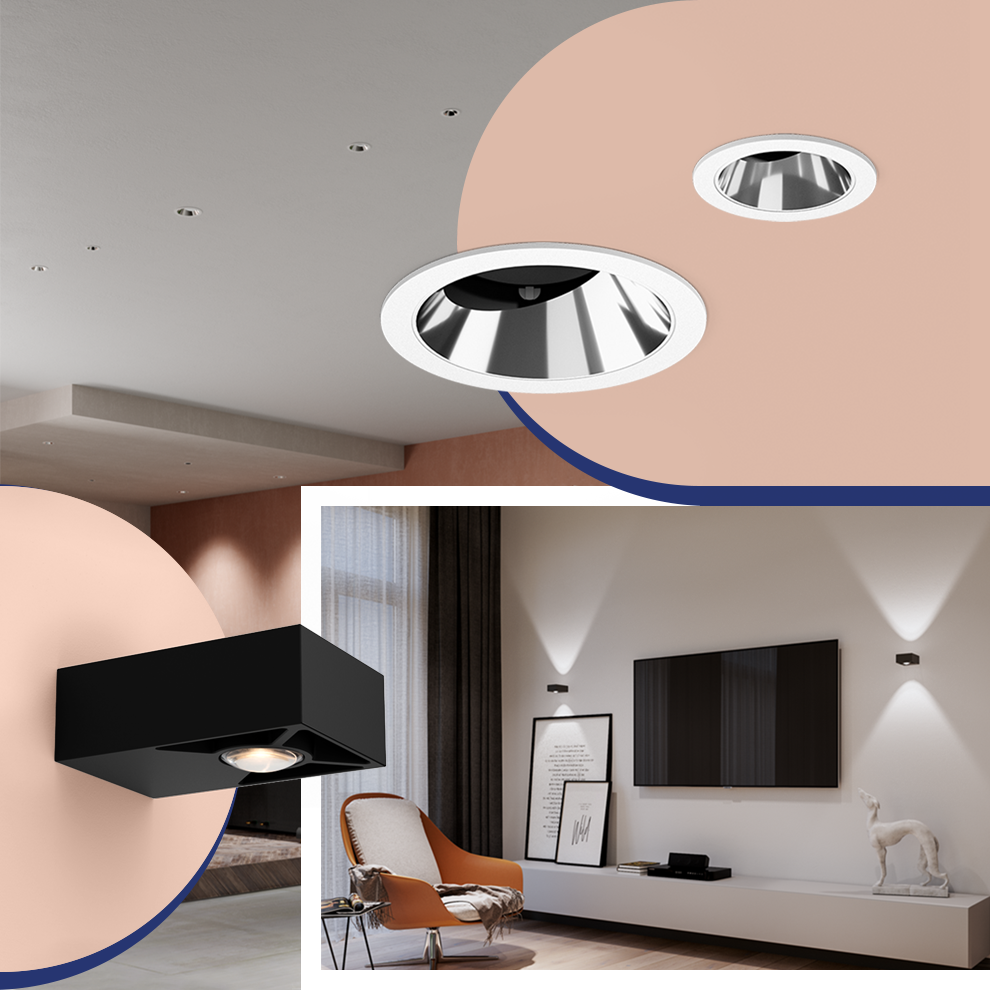
The soul of the interior is in the details that define the character of the living room. Avant-garde paintings, unique travel memorabilia or exotic plants require an appropriate light setting. In order to enhance their beauty without exposing the eyes to an unpleasant glare, it is worth using accent lighting, e.g. the RAFTER wall washer or 1000 PRO.
2. Define individual functional zones with lighting
Lighting is a simple way to split the living room into individual zones. Each living space should contain a living, decorative and relaxation area, properly arranged in terms of lighting. If you do not want to strain your eyesight, do not mount fixtures directly above the sofa. A much better solution is to place them above the side table, e.g. in the form of the fashionable spider. Not only will it add a modern style to the interior, but will also ensure our visual comfort, thanks to the recessed light source of PET next luminaires. In the TV area, it is a good idea to opt for delicate, diffused general lighting, additionally equipped with soft light right behind the receiver itself.
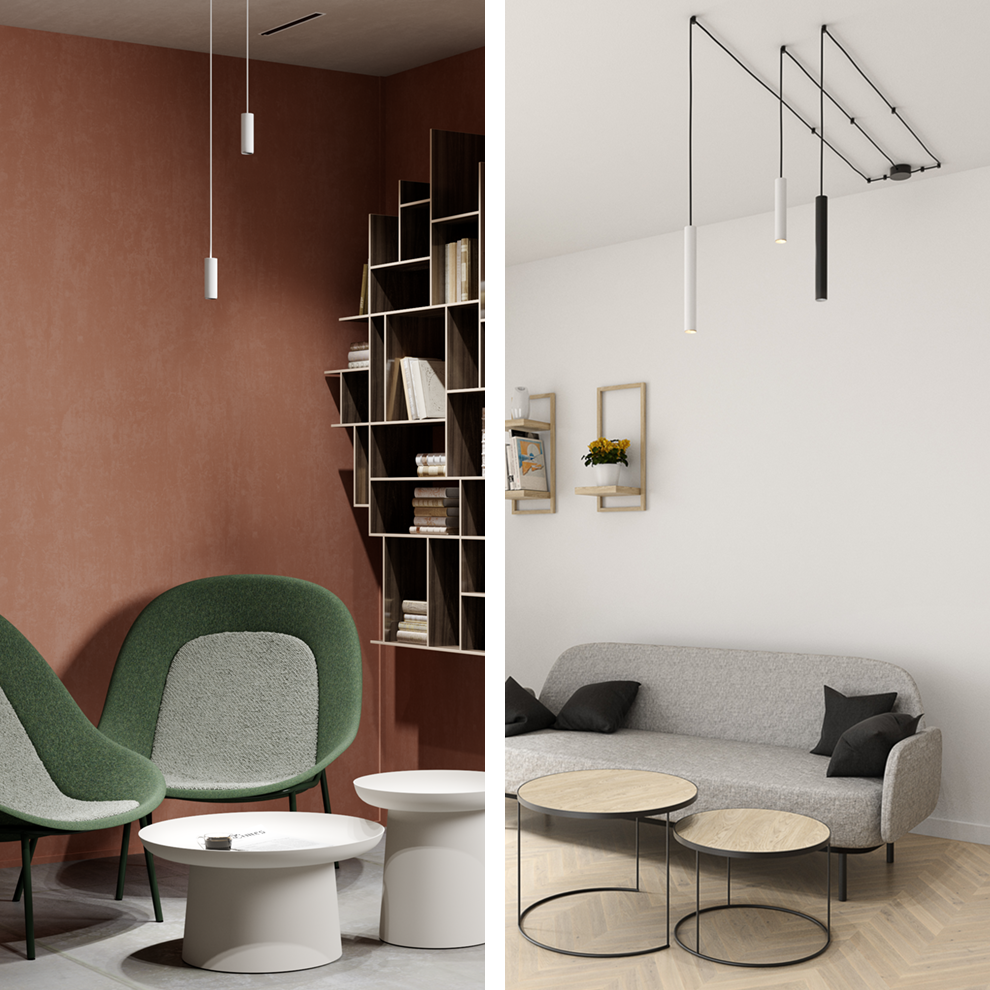
3. Choose the right colour of light
The colour of light, also known as colour temperature, is one of the key factors influencing our well-being and the interior atmosphere. Cooler hues of light lend elegance to the interior and facilitate concentration, neutral colour temperature is most reminiscent of daylight, while warm light makes the interior more cosy, putting us in a relaxed mood.
The multifunctional role of the living room may require a combination of several colours, whereas the lighting arrangement must be adapted to specific zones. Since colour temperatures look different when combining different colour temperatures in the same room, it is worth planning out separate scenes so that luminaires with different colour temperatures are not on at the same time. Another solution is to use lighting with variable colour temperature (Tunable-White), which can be adjusted to the desired colour of light with just one click.
A home office in the living room should be illuminated with a cold light, conducive to concentration and work atmosphere. General lighting, depending on our individual preferences, can balance between a neutral or warm colour. On the other hand, a typically warm light temperature should be used in the dining room or in the relaxation area around the sofa, where it is important to create a relaxing ambience that helps you unwind. An important aspect that should also be noted is the CRI, i.e. the colour rendering index. The higher it is, the better the light source renders true colours, emphasizing the beauty of fabrics, wallpapers, textures and even food.
4. Direct the light where you want it
Lighting busbars are a fashionable and sensible solution that allows you to avoid unsightly cables, floor luminaires or major electrical modifications, and above all, it allows you to direct the beam in any direction, thanks to the adjustment of the light incidence angle. By placing the spotlights in the middle of the living room, we protect the home dwellers' eyes against an unpleasant glare, ensuring high visual comfort and excellent illumination of important areas of the living room or the favoured details.
The big advantage of busbars is that you can change the arrangement of lamps within the bus at any time, and even add more without the need to modify the electrical installation. As a result, the lighting can easily follow an interior's shifting functions.
Another solution that allows you to illuminate the floor and aim the light in selected directions at the same time are hybrid luminaires that combine different optics. An example is the RAFTER mix. With its directional optics pointing straight down and a large protection angle, it will conveniently illuminate the floor. Meanwhile, the adjustable PET modules can be aimed at the desired direction.
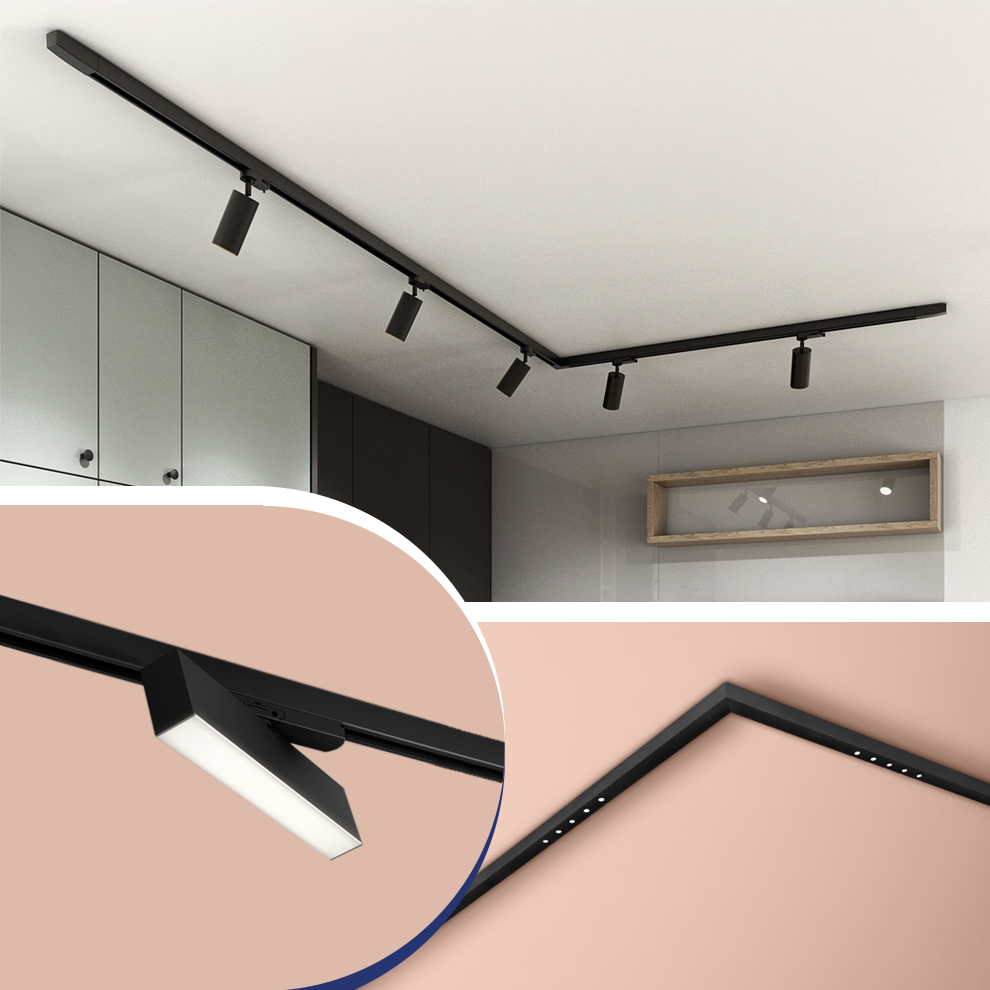
5. Arrange the office area accordingly
Some living rooms, in addition to the living and relaxation zones, also require an office area. The demands of the current times have forced many of us to make room for a space to work in within our own four walls. The key element of a home office, apart from a comfortable desk and chair, is proper lighting. After all, who would want to strain one's eyesight for almost half a day? The light in our workspace should be bright, lucid and have a cool colour to facilitate concentration and boost our performance. The RAFTER point with precise optics will be perfect for the job, as it will illuminate the desk without brightening the space around it, and in the less common arrangements, where it is not possible to suspend the luminaire from the ceiling, you can also use the SET RAW mini move wall lamp, whose illuminating surface can be directed towards the desk during work.
Lighting to fit your mood
Lighting the living room requires careful consideration. It is worth designating zones, which will make it much easier to select the right luminaires. It is important to use layered lighting that will adapt to our needs and mood. If we keep in mind these few key principles, we will be able to create a space where we feel... at home.